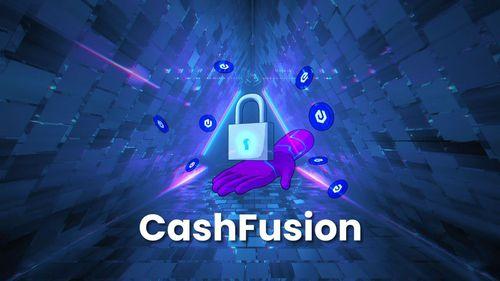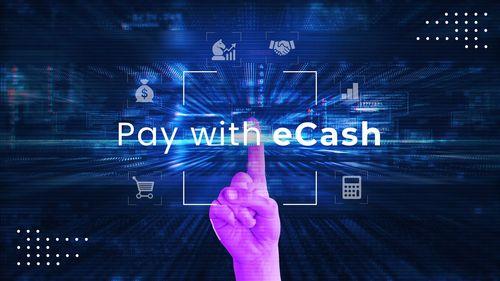One Month of eCash Staking RewardsOne Month of eCash Staking RewardsOne Month of eCash Staking Rewards
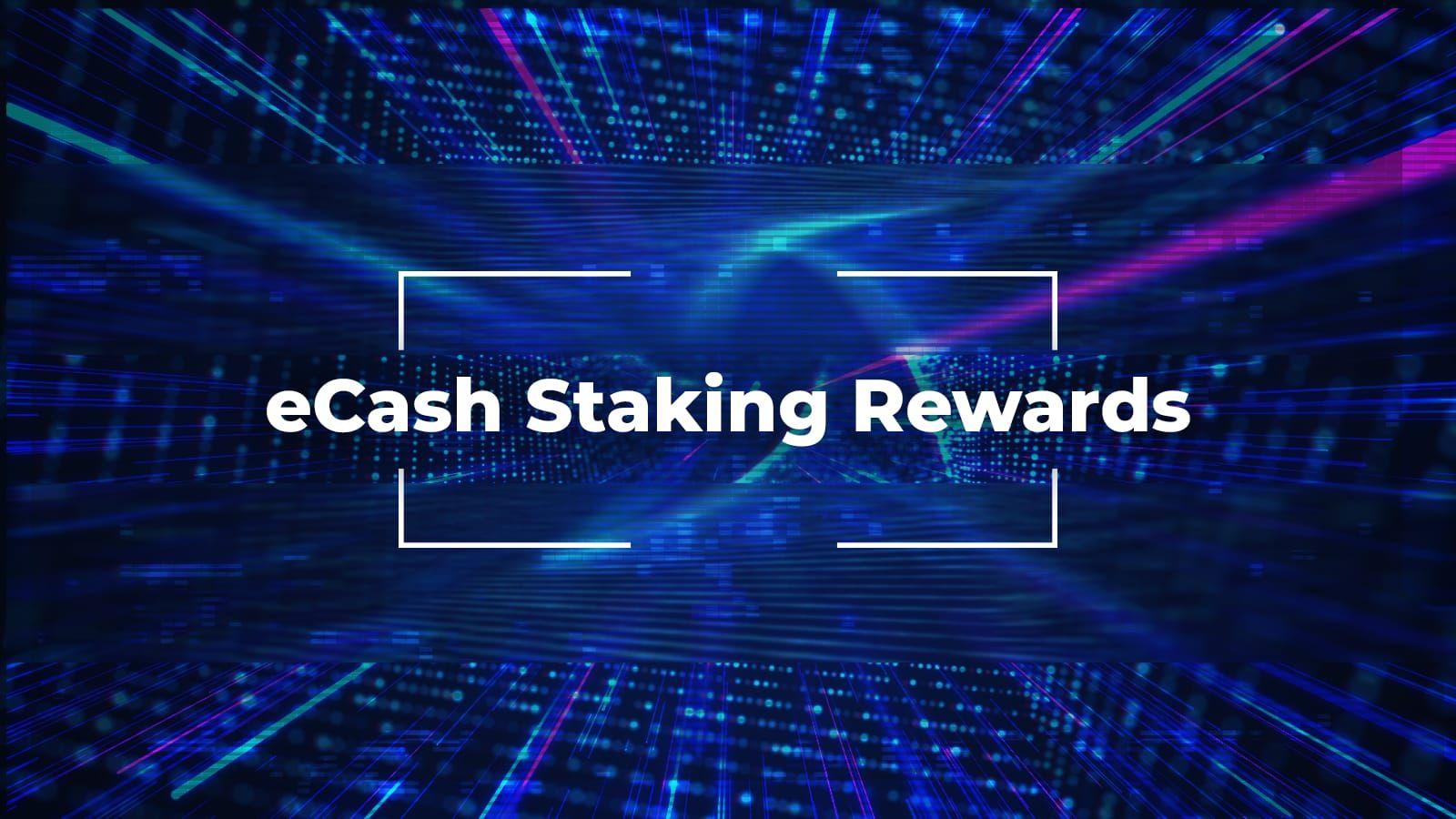
Exactly one month ago, we marked a pivotal moment in the eCash journey with the successful launch of Staking Rewards for Avalanche stakers as part of the November 15th, 2023 network upgrade. This innovative step positions eCash as a pioneering Bitcoin implementation to incorporate staking rewards, bolstering the eCash network by incentivizing Avalanche-enabled nodes. Staking Rewards is primarily about fortifying security and efficiency, but also plays a crucial role in fueling eCash's economic engine. Staking Rewards opens doors for XEC holders to earn income with their node, promoting the incentive to hold and contributing to price support by reducing the available supply.
Let’s reflect on this milestone and explore everything about Staking Rewards on eCash, starting with ‘Avalanche Consensus Integration’ where it all comes from!
Avalanche Consensus Integration
The Avalanche protocol represents a groundbreaking advancement in consensus technology. Its prowess lies in delivering unparalleled efficiency, speed, and heightened security, ushering in a new era for blockchain technology. Despite these merits, using Avalanche in isolation poses a notable challenge: the potential inability to trustlessly bootstrap new network participants, which could lead to a reliance on central nodes for this crucial process.
To address the centralization concern, eCash adopts a strategic approach by seamlessly combining the Avalanche protocol with its existing Nakamoto consensus. This hybrid model serves as a fundamental pillar of eCash, enabling the platform to leverage the efficiency of Avalanche while upholding the trustless and decentralized principles embedded in its proof-of-work foundation. The integration establishes eCash as a distinctive blockchain, strategically blending the strengths of both protocols. This innovative synergy not only mitigates individual weaknesses but also amplifies the collective strengths of Avalanche and Nakamoto consensus, positioning eCash at the forefront of blockchain technology evolution.
Why Staking Rewards?
The integrated Avalanche protocol itself has well-defined safety guarantees, but like the Nakamoto consensus that requires Proof of Work for Sybil resistance, Avalanche consensus also requires some sort of method for Sybil resistance to ensure bad actors aren’t able to cheaply spin up nodes and attack the network. To provide this Sybil resistance, the eCash Avalanche network requires that every Peer that participates in Avalanche voting has an associated “Stake Proof”. More than one Avalanche Node can be associated with the same Proof, and from the perspective of the Avalanche voting protocol, the group of nodes associated with the same Proof is called an “Avalanche Peer”.
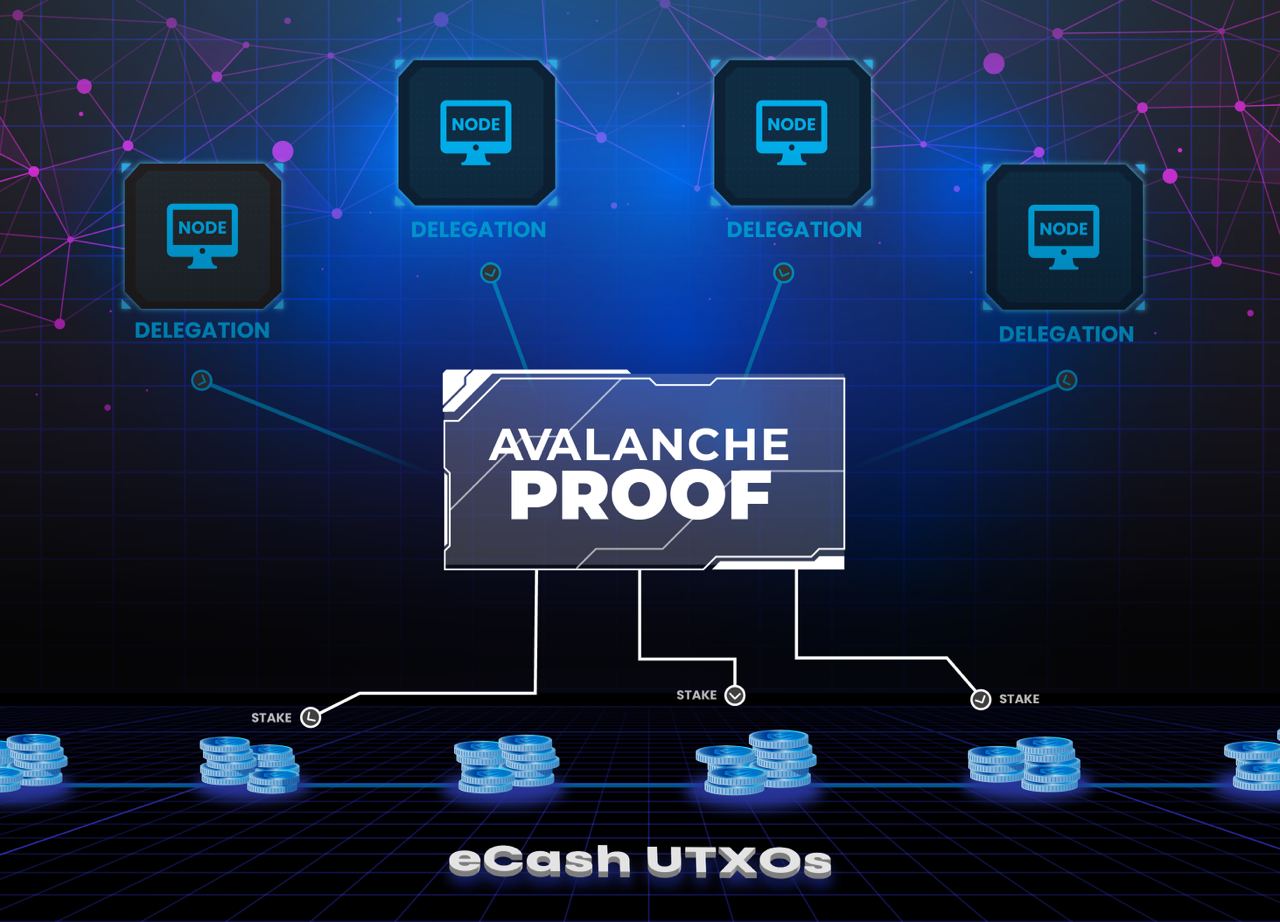
The Proof provides Sybil resistance by being associated with eCash coins (UTXOs). The Proof contains signatures from the private spending key for those coins. This means that only the person who knows the private key for the coin can add Stakes to the Proof. One Proof can be tied to many coins, which means that the coins don’t have to be moved in order to create the Stake Proof.
How to Stake eCash (XEC) and Earn Staking Rewards?
To stake eCash and earn staking rewards, you have to run an Avalanche-enabled eCash node and stake at least 100M XEC per UTXO for about 2 weeks (2016+ network confirmations). You can stake coins by creating a Proof using the official desktop wallet for eCash: Electrum ABC. It's important to note that the staking process in eCash is designed to be non-custodial. This means that participants retain complete control over their funds without the necessity to lock them up or transfer them. To ensure safety and security in participation, users are advised to use only the Electrum ABC desktop wallet for creating a stake proof and to remain cautious of potential scams, particularly those claiming to be staking web wallets.
Learn more about staking your XEC and requirements here.
How is the Staking Reward Recipient Determined?
The reward winner is determined by generating a ranking value for each Proof in the quorum, and then selecting the smallest as the winner for that block. This ranking value is generated by hashing the Proof ID together with the previous block hash, and then scaling the result appropriately based on the staked amount. At the moment, the Staking Reward per block is 10% of the (Coinbase reward + block fees) and the current annual percentage return (APR) is around 15.62%.
eCash Avalanche Network Evolution
Since we announced the launch of Staking Rewards as a part of the November 15th eCash network upgrade on October 11, 2023, the eCash Avalanche network has evolved rapidly. The overall staked amount skyrocketed from 98.1 billion XEC to an impressive 210.3 billion XEC making it harder for malicious actors to attack the network. In fact, the cost of attempting a double spend on eCash surpasses that of BTC. In a hypothetical attack scenario, an entity would need 7/8 of the entire stake (unmoved for 2 weeks) as well as 51% of the hashrate to have a potential attack chance. In our opinion, eCash has integrated the most complete security model of any other Bitcoin implementation to date. The number of nodes surged from 33 to 79, and the Avalanche Peers increased from 23 to 61, and we are just getting started!
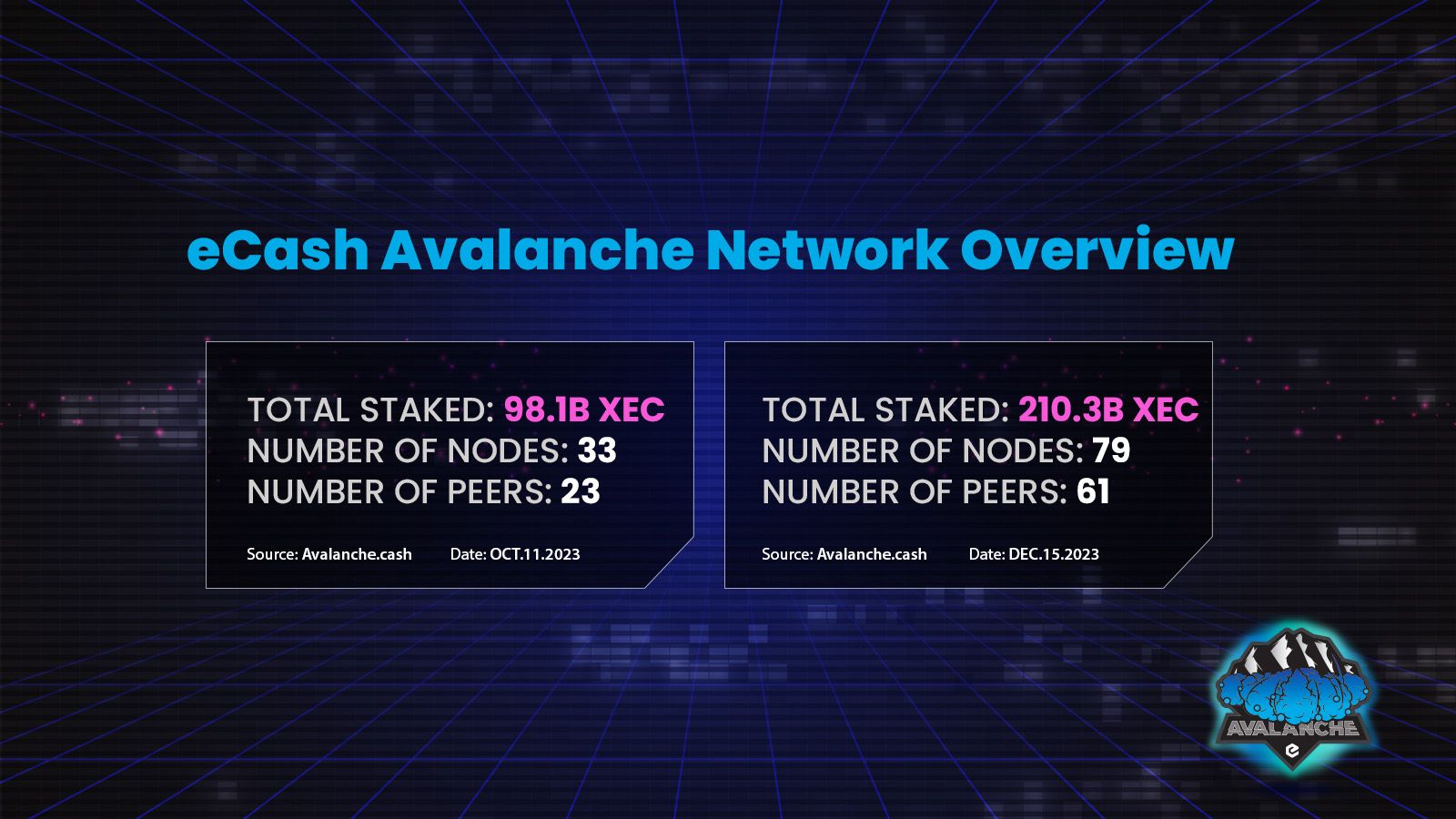
The more nodes there are in the network, the more decentralized and resistant it is to control or manipulation by a single entity. A decentralized network is more resilient against attacks. If many eCash nodes are distributed globally, it becomes more challenging for any single entity or group to compromise the network's security. Moreover, decentralization enhances the trustless nature of eCash. Users don't need to rely on a single central authority; instead, they can trust the consensus mechanism maintained by a distributed network of nodes. Staking Rewards strengthens the network by incentivizing these honest nodes. The eCash network becomes more robust, resilient, and decentralized as more peers join and participate in the network.

